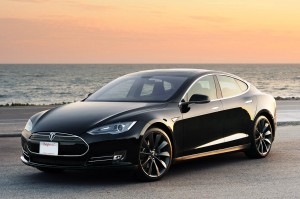The company is at it again. With a software update sent over the air to anyone who bought a Tesla since the fall of 2014 and is willing to pay $2500, the vehicles will now be able to do the following:
Autopilot allows Model S to steer within a lane, change lanes with the simple tap of a turn signal, and manage speed by using active, traffic-aware cruise control. Digital control of motors, brakes, and steering helps avoid collisions from the front and sides, as well as preventing the car from wandering off the road. Your car can also scan for a parking space, alert you when one is available, and parallel park on command.
Musk keeps making big promises, but this latest rollout is evidence that he might be able to actually keep them. In particular, he recently pledged that the company will be making 745-mile range batteries in completely autonomous vehicles by 2020.
What would this mean for the environment? To quote Trump, HUGE. On the EV side, it means an accelerated move from petroleum fuels to electricity in battery electric vehicles. It means more mobile battery storage that can provide grid services like smart charging (soaking up surplus solar power, for example) and possibly vehicle-to-grid power (sending electricity back to the grid from the car battery when it’s needed). And it means cheaper batteries more generally that can be used for stand-alone energy storage.
But it also means that a revolution in passenger vehicle travel could be around the corner. With autonomous vehicles, cars can drive more efficiently and therefore reduce tailpipe emissions, and they potentially could be more easily rented on-demand, meaning reduced auto ownership and the associated need for real estate devoted to parking (downtown parking garages and home garages, most prominently).
So even if you’re not a technophile or car person, there’s plenty of reason to be optimistic with this latest development.
Leave a Reply
You must be logged in to post a comment.



